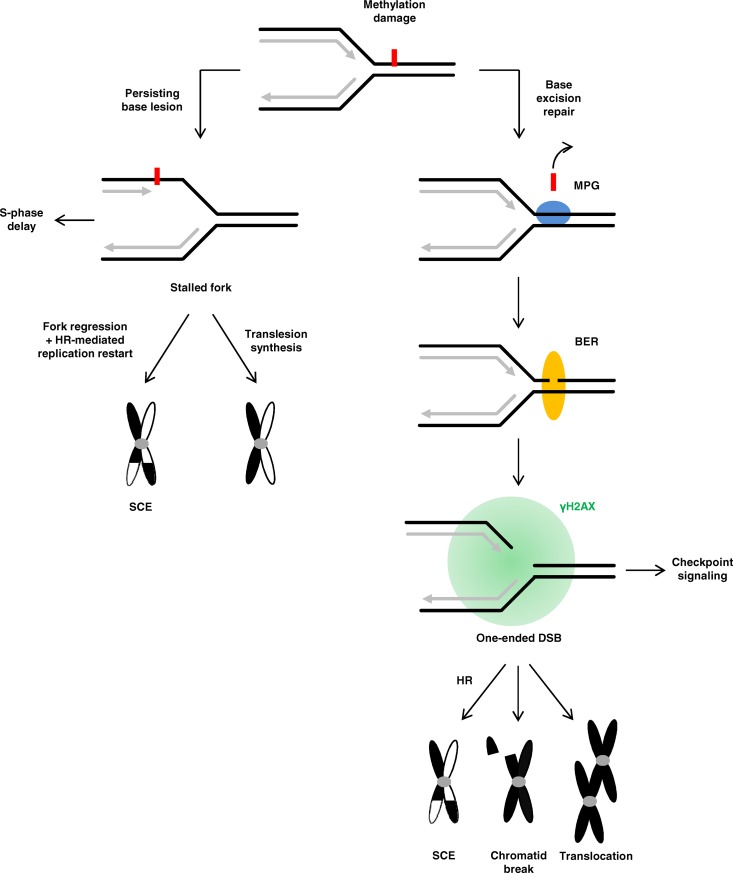Figure 8.
Methylated base adducts and BER intermediates interfering with replication cause distinct effects. MMS-induced N3-MeA can block replication forks (here shown for a lesion on the leading strand). Such stalled forks are mainly responsible for the strong S-phase delay after MMS. Different mechanisms exist to overcome such a blockage, with translesion synthesis being one of the predominant pathways that is not associated with SCE formation. Another process is fork regression, which leads to the formation of a chicken foot structure that can be resolved by an HR-mediated process associated with SCE formation. HR-mediated repair of single-stranded gaps, which are formed at methylated base adducts blocking lagging strand synthesis, might also contribute to SCE formation (not depicted in the model). The majority of methylated base lesions induced by MMS is repaired by BER, which is initiated by MPG. Upon interference of replication forks with SSBs induced during BER, one-ended DSBs are generated, which give rise to the formation of γH2AX foci. If unrepaired or mis-repaired, such one-ended DSBs cause chromatid breaks or translocations, respectively. Thus, one-ended DSBs arising in a BER-dependent manner are responsible for the formation of chromosomal aberrations after methylation damage. BER-induced SSBs can also lead to SCE formation.

